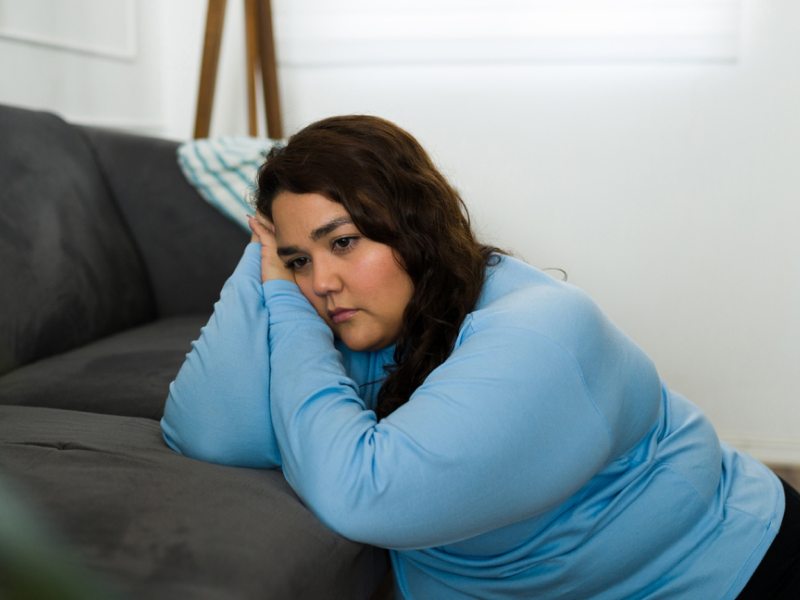
Table of Contents
Here’s 5 Tips to Stop a Panic Attack
Written By: Charlie Health Editorial Team
February 13, 2024
4 min.
While not a substitute for professional mental health support, these evidence-based tips may help to stop a panic attack.
Learn more about our Clinical Review Process
Table of Contents
Panic attacks can happen unexpectedly and cause intense fear and discomfort—so much so that symptoms mirror those of a heart attack, like chest pain. Unlike a heart attack, though, panic attacks often stem from stress or underlying mental health conditions like anxiety disorder and panic disorder. That’s why seeking professional support is crucial if you experience frequent panic attacks.
In addition to seeking professional mental health support, though, there are some things you can do to cope with panic attack symptoms. Keep reading to learn five practical tips to manage panic attack symptoms and learn what to do after a panic attack.

Therapy for managing panic attacks
Get more than once-weekly support for long-term healing.
Five tips to stop a panic attack
There are many ways to manage a panic attack, ranging from breathing techniques to seeking social support. Finding what works best for you can take time since each person’s experience and coping mechanisms vary. Be patient with yourself and take time to find out what works best for you. Below, we delve into five strategies to help stop a panic attack.
Practice deep breathing
Deep breathing exercises, such as somatic breathing, are one way to help manage panic attacks and calm your body and mind. With somatic breathing, you focus on taking deep breaths, inhaling through your nose to allow your belly to expand fully, and exhaling slowly through your mouth. This breathing technique helps activate relaxation, easing tension and reducing anxiety levels, which usually peak during a panic attack.
Use grounding techniques
Grounding techniques are tools to anchor yourself in the present moment and redirect your focus during a panic attack. One example is the “5-4-3-2-1” technique. This sensory-focused activity includes naming five things you see, four things you touch, three things you hear, two things you smell, and one thing you taste. The “5-4-3-2-1” exercise can help break the cycle of panic and ground you in the present moment.

Try a muscle relaxation technique
During a panic attack, the body experiences heightened stress. Progressive muscle relaxation (a kind of grounding technique) involves tensing and then releasing muscles, reducing physical tension and diverting attention from panic-inducing thoughts. Regular practice of progressive muscle relaxation helps people control their body’s responses, potentially reducing panic attacks.
Practice mindfulness
During a panic attack, mindfulness can help you observe your thoughts and feelings calmly instead of getting overwhelmed. Pay attention to your breath, feeling it go in and out. If your mind starts to worry, gently bring your focus back to your breath. Practicing mindfulness can make you better at handling panic and calming your nerves.

Seek social support
When experiencing a panic attack, reaching out to a trusted friend, family member, or support person who can provide comfort and reassurance can be helpful. Reaching out to someone who knows how to provide support can make a big difference during a panic attack, as their words can help manage panic attacks. Whether you talk in person, on the phone, or through text, connecting with a trusted loved one can help you feel supported and less isolated.
What to do after a panic attack
After experiencing a panic attack, it’s essential to focus on self-care and recovery. Remember that recovering from a panic attack takes time, and it’s okay to seek help and support as needed. In the long term, reaching out to a mental health professional can offer valuable support in managing panic attacks.
Practice self-compassion
Be kind to yourself and acknowledge that experiencing a panic attack can be challenging. Remind yourself that you’re doing your best and that it’s okay to struggle sometimes.
Rest and practice self-care
After experiencing a panic attack, allow yourself time to rest and recuperate. Your body and mind may feel exhausted from the intense experience, so prioritizing self-care is essential. Engage in activities that promote relaxation, such as taking a warm bath, listening to calming music, or practicing gentle yoga or meditation.
Reflect on triggers
Take some time to reflect on what may have triggered the panic attack. Identifying triggers can help you develop coping strategies and avoid similar situations. Try journaling your experiences to identify patterns or themes that emerge.
Seek treatment for panic attacks if needed
If you’re struggling to cope with panic attacks or if they’re significantly impacting your daily life, consider seeking help from a mental health professional. Therapy can help if you are feeling unsure about how to cope with panic attacks on your own. Research shows that cognitive-behavioral therapy (CBT) can provide you with effective coping strategies, support, and guidance to manage panic attacks and panic disorder more effectively.

How Charlie Health can help with panic attacks
If you or a loved one are struggling with panic attacks, Charlie Health is here to help. Charlie Health’s virtual Intensive Outpatient Program (IOP) provides more than once-weekly mental health treatment for young people dealing with complex mental health conditions. Our expert clinicians incorporate evidence-based therapies into individual counseling, family therapy, and group sessions. With treatment, managing panic attacks is possible. Fill out the form below or give us a call to start healing today.




